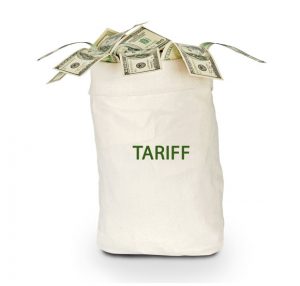Should the JV Between Allegheny and Tsingshan Stainless Receive Section 232 Exemption?
On March 26, ATI Metals filed an exemption to the Section 232 tariffs on behalf of its joint venture (JV) with Tsingshan Stainless called Allegheny & Tsingshan Stainless.
Need buying strategies for steel? Try two free months of MetalMiner’s Outlook
In November 2017, the JV sought to produce and market 60” wide sheet in the North American market, a width ATI can no longer melt and cast due to the idling of its Midland, Pennsylvania, melt shop. Chinese company Tsingshan, the largest stainless steel producer in the world, has supplied the slab since Q4 2017 from its vertically integrated mining, refining and casting assets in Indonesia.
ATI has been converting slab using its state-of- the-art Hot Rolling and Processing Facility (HRPF) in Brackenridge, Pennsylvania, and the JV’s Direct Rolled Anneal and Pickle (DRAP) facility in Midland.
Although ATI has long supported anti-dumping and countervailing lawsuits in the United States to combat unfairly traded imports, the JV presents a unique situation.
Although the final hot and cold rolled stainless steel is produced in western Pennsylvania, the slab is currently subject to the 25% Section 232 tariff because it is of Indonesian origin. To claim an exemption from the tariff, ATI must prove that there are no viable alternatives available in the United States.
In last week’s earnings call, Outokumpu’s CEO Roeland Baan stated that they could supply slab from its Calvert, Alabama, facility, and, thus, ATI should not receive an exemption. Others have proposed that ATI could restart its 60” wide melt shop in Midland, Pennsylvania, idled three years ago.
Are these options feasible?
The question is important to buyers of metal because ATI is a third U.S. option for 60” wide hot and cold rolled stainless steel. In addition, lead times remain longer than the typical four to six weeks. Outokumpu currently quotes August delivery.
The reasons for exemption warrant further investigation.
First, let’s examine the Outokumpu option. Outokumpu’s Calvert, Alabama, facility has a nameplate capacity of 900,000 metric tons. According to Outokumpu documents, its cold rolling capacity between Calvert and Mexinox is 600,000 MT and Calvert’s hot rolling capacity is 150,000 MT, for a total of 750,000 tons. Outokumpu says it has slab capacity to offer to ATI.
Although the Calvert melt shop has a nameplate capacity of 900,000 MT, the production would have to be entirely produced to the maximum width to produce 72” wide. As the market for 72” remains niche, one can assume Outokumpu produces more 48” and 60” wide slab, as well as some 36” wide. These widths would result in a much lower actual capacity than 900,000 MT.
According to Bob Wetherbee, executive vice president of ATI’s Flat Rolled Group, Outokumpu has not made an actual offer which would entail a price, quantity or delivery date, as well as a long-term agreement.
What about the option to reopen the 60” wide Midland melt shop?
According to Wetherbee, the expense to restart Midland does not make financial sense. The 350,000-ton melt shop was idled three years ago. To restart and upgrade the melt shop would cost approximately $25 million. The restart would also entail getting EPA and Pennsylvania EPA review and approval, which would be a multiyear process for the air modeling impact at the expense of $75 million.
In addition to the capital investment, workers would have to be trained, which would be about a nine-month process. Restarting the melt shop is not as simple as flipping a switch.
There are several other arguments for a Section 232 exemption.
First, the reopening of Midland’s DRAP line creates 100 high-paying jobs in western Pennsylvania, in addition to the many jobs created indirectly. Without the JV slab agreement, these Midland jobs would not exist.
Also, ATI states there has never been a merchant market in the U.S. for stainless slabs, unlike the carbon steel market. Finally, ATI needs to have the Brackenridge HRPF running with the base load of commodity stainless steel to produce alloys for the national defense.
MetalMiner’s Annual Outlook provides 2018 buying strategies for carbon steel
As previously mentioned, ATI has been a longtime opponent to unfairly traded imports. No longer the market leader, ATI follows the U.S. market pricing, as signaled by North American Stainless.
ATI has announced several price increases in 2018 along with other U.S. mills. On April 1, it chose to increase prices by adopting a graphite electrode surcharge, just as Outokumpu and AK Steel had done previously. ATI is not expected to drop prices below other U.S. producers, but needs the Indonesian slab to produce 60” wide at a market competitive number.
For buyers of metal, more purchasing options appears attractive, especially with the longer-than-normal lead times at present.
The exemption ruling will occur by the end of June.



One Comment
I keep seeing “the jv will create 100 high paying jobs” or something along those lines. What about the roughly 150 jobs directly related to the Midland melt shop/caster/conditioning. Plus all the people from Harsco, Inland, and the railroad workers…maybe another 50 people. You have about 200 US workers unable to work at the mill, because ATI wants to import steel from Tsingshan. There is no reason ATI should receive an exemption. Especially when you have the capabilities to produce steel literally right next door to to the D.R.A.P. line. Yeah they “create” 100 jobs that were already in place before the lockout, but forget about the 200 other jobs.